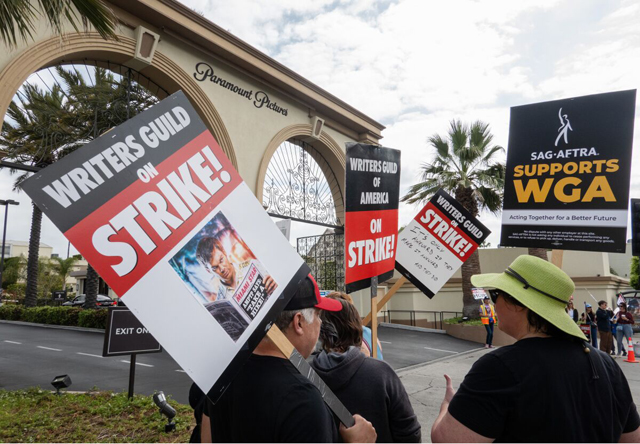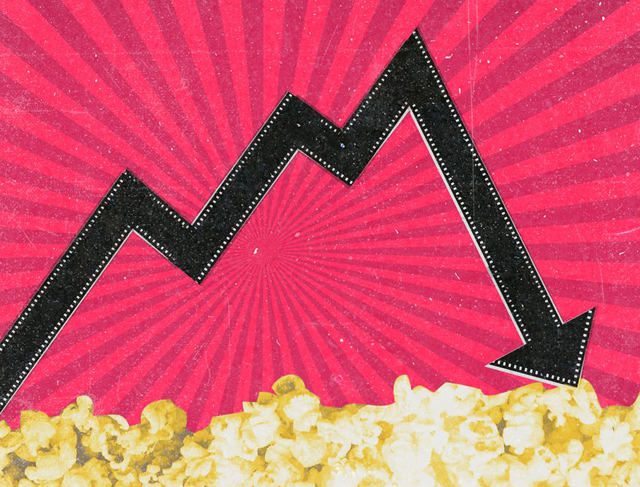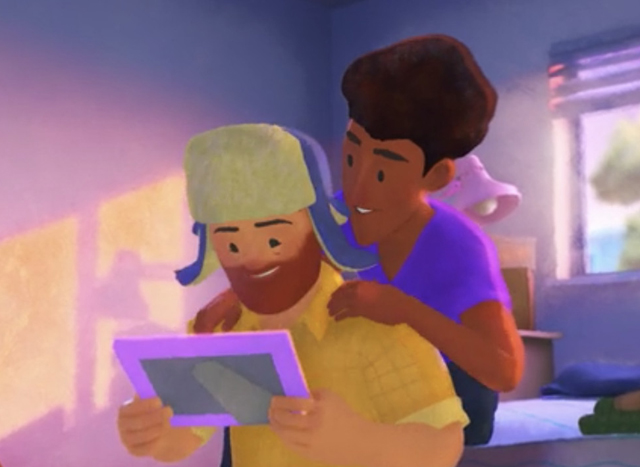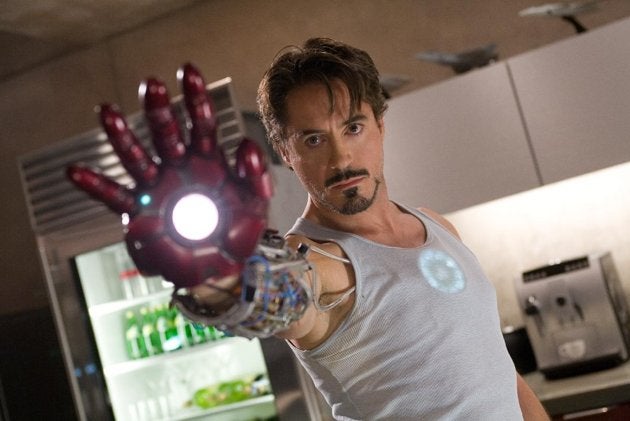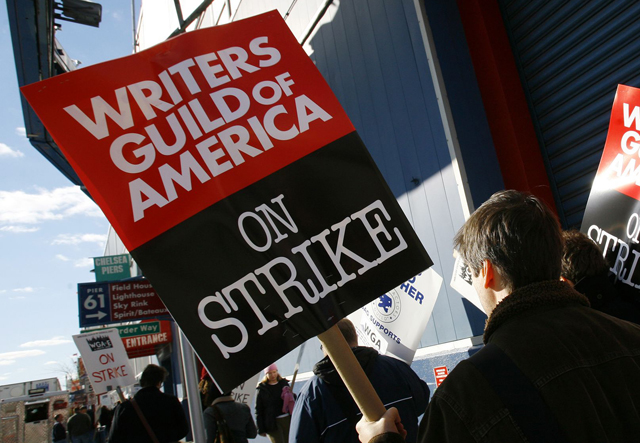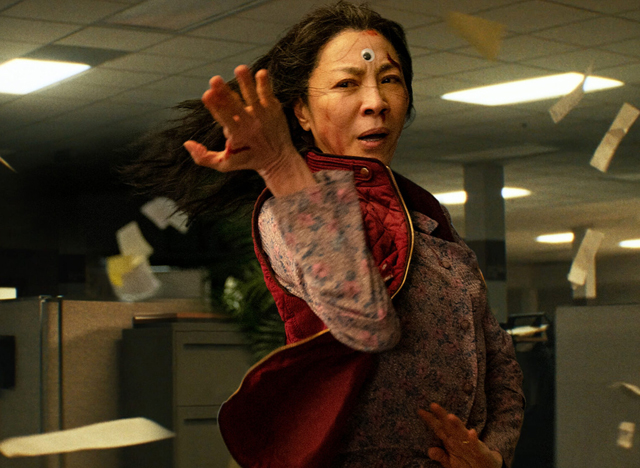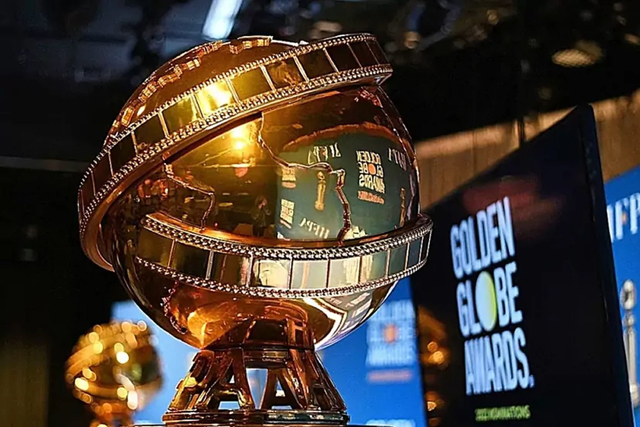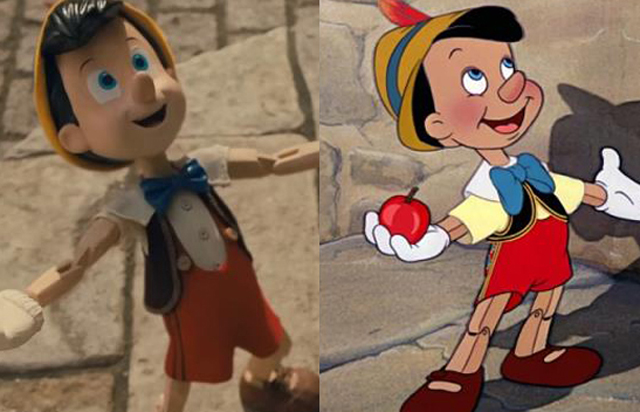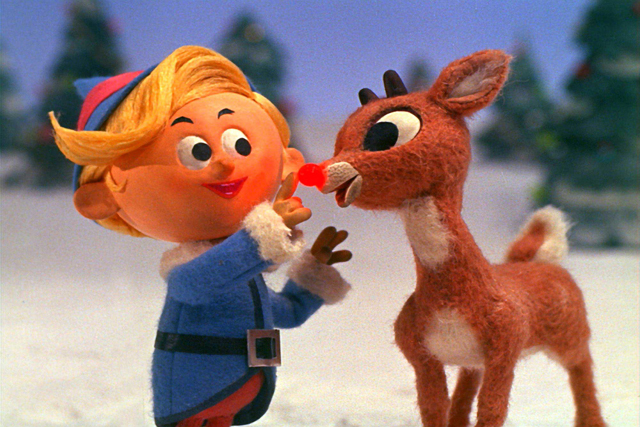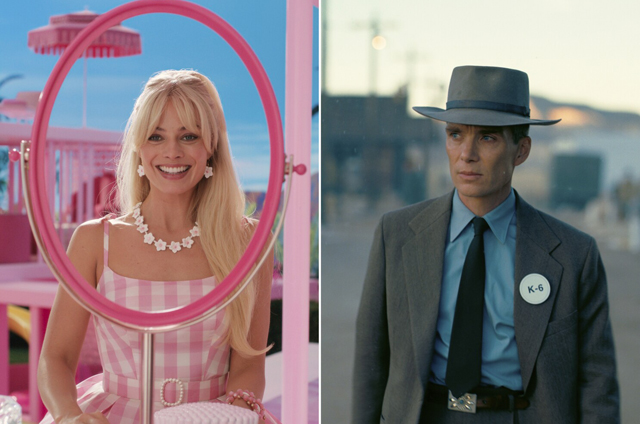
When people were giving their predictions for how the Summer 2023 box office race would go, I don’t think that many had this scenario playing out on their radar. Warner Brothers’ Barbie and Universal Studios’ Oppenheimer not only beat expectations, they together combined to produce the one of the biggest theatrical weekends ever upon their openings in mid July. And not only did they both start strong, they have shown strong legs at the box office week after week. As of this writing, Barbie should have grossed by now over $600 million domestically and $1.3 billion worldwide, while Oppenheimer stands at a not to shabby $300 million domestic and $800 million worldwide. That’s exceptional for both films, but it is confounding the whole industry, because these were not the kinds of movies that should be putting up these kinds of numbers. For the last decade, brands like Marvel, Star Wars, Fast and the Furious and Transformers have been the ones that have populated the billion dollar club. But, in a year where those same franchise have submitted their own entries into this year’s box office race, it’s these two unlikely films that have managed to dominate. It’s just such an unexpected outcome, and it’s making executives and analysts re-consider if all of their box office data from the last decade is all wrong. You’ve got a meta feminist satirical comedy centered around a toy doll and a three hour long, talky biopic about the inventor of the atomic bomb, and they are performing better at the box office than Indiana Jones, Mission: Impossible and Fast and the Furious; and not just by a little, by a lot. There are so many factors that went into the phenomenon that is “Barbenheimer,” but the whole outcome is also revelatory of all of the continuing problems that are plaguing Hollywood today, and that the success of the two movies are shining a spotlight on what needs fixing to help bring the box office back to where it should be.
It helps to know how the whole “Barbenheimer” thing got started in the first place. Both Barbie and Oppenheimer were set for Summer 2023 releases, but people took notice when the individual studios behind the movies planted their flag on the same exact date; July 21, 2023. The disparity between the titles couldn’t be more night and day. Barbie was awash in bright colors and it’s sense of humor was broad and cartoonish. Oppenheimer by contrast was muted and heavy and very serious in tone. People on social media began to poke fun at the yin and yang differences between the two films, making bets on which one will give up their post on the release date first. To a lot of people’s surprise, neither film budged, which led a lot of box office analysts to believe that this kind of counter-programming would end up canceling both films out. That’s why advance box office predictions for both films remained on the low end for much of the summer. But social media wasn’t overlooking the two films. If anything, there was anticipation rising. Suddenly, there were two rival camps rising up in internet circles representing Team Barbie or Team Oppenheimer. The speculation about who was going to be the champion of this opening weekend began to grow into something viral. Memes were shared, slogans were prepared. And then the viral movement evolved into something different entirely. The different factions decided that they were going to join forces and turn the opening of both films into an event of it’s own. No longer were people rooting for one film over the other, but instead they were going to support both films together. There was a healthy chunk of people who were even committed to watching both movies back to back in one night. Once opening weekend approached, the studios were shocked to see that their modest predictions for these two movies were going to be completely blown up.
What became known as Barbenheimer was a completely grass-roots effort that blossomed at just the right moment. Neither Warner Brothers nor Universal had a hand in creating this phenomenon in their marketing. Their best decision was to not get involved at all; allowing the grass roots movement of Barbenheimer to flourish on it’s own. They of course were the big beneficiaries of all of this, achieving record breaking box office as a result, which was especially needed for Warner Brothers who have otherwise had a terrible year at the box office. But, the fact that the grass roots effort culminated in such a success for the two films is something that absolutely should challenge the common wisdom that the industry has relied upon for quite a long while now. Coming out of the pandemic, Hollywood has been struggling to figure out how to bring audiences back to the theaters in the same kind of numbers that they did before the outbreak. Unfortunately, a lot of the executives believed that business would return to normal like it had been before and that the same kind of movies released in the past decade would be the ones to save the box office. This was true with a handful of cases (Spider-Man: No Way Home, Avatar: The Way of Water), but the overall box office performances for many films were just not reaching the levels they had in the past. What seems to have lit the fire of “Barbenheimer” was a feeling amongst audiences that they wanted something that was worth rushing out to the theater for; something that couldn’t be replicated in home viewing. So, in the absence of such an event at the box office, audiences instead created one itself. The peculiarity of the Barbie and Oppenheimer counter-programming made it something that audiences had to see for themselves, and that’s why the opening weekend of those movies ended up being so huge. Hollywood had been denying audiences a worthwhile experience, so something had to fill that void and that’s why the phenomenon happened. This makes “Barbenheimer” such a game changer because it’s the clearest example yet of an audience driven statement for the rest of the industry.
To the individual films’ credit, they managed to hold onto those audiences beyond the opening weekend. The two films are both critically acclaimed and beloved by fans, so even though a meme generated online movement worked to inflate opening weekend numbers, it was thankfully for two films that were strong enough to maintain those captured audiences. I’ve already talked about Oppenheimer in my review here but it’s still pretty incredible to see it have the box office stamina that it has. It’s been a while since a three hour film that was not part of a franchise and is a historical drama has made this kind of money at the box office. You’d have to go back decades to find any movie that had the kind of box office performance that it has had. It is a Christopher Nolan film to be sure, but Oppenheimer is the least action packed movie that the director has ever made. It’s a film that builds tension to be sure, but it still sticks to the kind of genre trappings that historical biopics usually have, which is a lot of talking in small rooms. And yet, it’s performing even better than Nolan’s more bombastic films. It helps that it’s clutched to the coattails of Barbie by virtue of it being counter-programming. There was little doubt that PG-13 rated Barbie would have the bigger box office, but given the resulting numbers that came in, it seemed like Barbie also was boosted by Oppenheimer’s presence and vice versa. Barbie itself is definitely not the kind of movie that should have this result at the box office either. Director Greta Gerwig is not a filmmaker you would associate with billion dollar movies. Her first two films, Lady Bird (2017) and Little Women (2019) did pretty well at the box office, with Little Women getting an awards season boost to a $108 million gross. Even still, Warner Brothers was gambling giving this possible franchise builder to a filmmaker with just indie cred. But, Gerwig’s outsider sensibilities gave Barbie exactly what it needed to stand out. By tackling some meaty issues like feminism and social hierarchies within this film centered around an iconic brand, Greta made a movie that transcended it’s name brand and appealed to audiences through it’s unique voice. For both Barbie and Oppenheimer to succeed like they are, it’s making a huge statement for films that are distinctly filmmaker driven.
Which gets to how the “Barbenheimer” phenomenon is exposing some of the problems that have plagued the movie studios recently. The fact that two filmmaker driven films are dominating the box office puts the pressure on the studios who are currently at odds with their talent as both the writers and actors continue their ongoing strike. Sure, the box office numbers are good now, but with the strike continuing to put a halt on all productions, there’s not much the studios can do to capitalize on the success of these movies. Both Christopher Nolan and Greta Gerwig, who are members of the Writer’s Guild of America, are on those picket lines too, refusing work in solidarity with their fellow creatives. As a result, neither them nor the studios can strike while the iron is hot with this “Barbenheimer” moment. Certainly Christopher Nolan and Greta Gerwig can survive on the strength of their names alone and they’ll be highly coveted creatives once the strike is over. But they know that it’s more important to stand with the rest of their communities and not put any work yet into their next projects, which puts all the pressure on their studios. They are collecting the strong box office now, but it’s the long term success that they are jeopardizing by refusing to give the unions what they want. And “Barbenheimer” marks a strong transition point in the industry, where audiences are making it known that they’d like more movies like these two instead of the movies that Hollywood thought that audiences wanted. So, with the inability to pivot because all of their talent is on strike, the studios are slowly realizing that they are letting a prime opportunity slip away, and that it is something that they can’t get back unless they swallow their pride and meet the demands of the writers and directors. Barbie and Oppenheimer are showing the industry the powerful box office effect of movies succeeding because of the clear sighted visions of their filmmakers, and that audiences want films that are unique within their own voice.
One of the other things that “Barbenheimer” has shined a light on is the growing sense of franchise fatigue that is setting in amongst audiences. People for a long time have been complaining that Hollywood is out of ideas and that they are over reliant on franchise power to drive box office. That feeling of fatigue is now starting to set in for the vast majority of film goers now, as the Summer of 2023 has been littered with one disappointment after another. Mainstays like Indiana Jones, Mission: Impossible, Fast and the Furious, and even mighty Marvel all saw diminished box office despite a huge amount of hype leading into this Summer season. In the the last decade, these franchises were all sure fire winners, and for a lot of people it looked they were going to perform on par with their averages. With Covid now in the rear-view mirror, and no restrictions in place to affect ticket sales, this should have been a record-setting Summer. But it never materialized; at least not as predicted. Guardians of the Galaxy Vol. 3 did about as well as expected, but didn’t over perform. Indiana Jones and the Dial of Destiny, Fast X, and Mission: Impossible – Dead Reckoning Part One would have had decent box office numbers if their astronomical budgets weren’t so high. And the less said about The Flash, the better. Audiences made their voices clear; they just weren’t interested in these old franchises anymore. That’s why Barbie and Oppenheimer stood out so much; they were refreshingly new; not bound by deep lore or multi-year cinematic universes, just easy to digest singular stories told very well. This is another reason why the ongoing stalemate with the studios and the unions is going to make things difficult for the future of Hollywood. What has been working in the past no longer applies. There is an appetite now for new things and the ability to coast on franchise power is waning.
At the same time, it should be understood by everyone in Hollywood; you can’t manufacture a phenomenon like “Barbenheimer.” This thing grew up in spite of the goings on within the industry, built completely by the fans themselves. There certainly have been attempts to campaign for a film with viral marketing, but “Barbenheimer” wasn’t manufactured out of some publicity department. It started as a joke, and the fact that it grew into the movement that it became was more of an organic reaction to all of the things I discussed above. These movies became a success because audiences chose to make them a success. They wanted an event to get them excited, and to everyone’s delight what started off as a silly internet game became a moment where we actually appreciated the theatrical experience again. That’s probably what is at the heart of Hollywood’s troubles; they’ve lost the ability to make movies feel special. The over abundance of franchises diluted what had made the original movies special in the first place. The diversity of films has also diminished, as the market is now flooded with super hero films and explosive action movies (the ones that produce a big opening weekend) while other genres like romance and comedy have been exiled to streaming. Gone are the days when something unbound to a known franchise name like Forrest Gump (1994) or There’s Something About Mary (1998) could open strong and then just stick around week after week for a full season. Barbie and Oppenheimer are anomalies to be sure in this landscape, but they are not unusual in the whole history of Hollywood. In the Golden Days of the industry, movies were events that people used to line up around the corner for. The early days of Star Wars saw people dressing up as their favorite characters as a way of participating in magic of the event itself. Is that any different from all the people wearing pink to the multiplex when they are seeing Barbie? “Barbenheimer” is filling a void, and Hollywood needs to reconcile with why that void exists in the first place.
I knew this thing was going to be something big the moment that I saw someone wear a custom made Barbie and Oppenheimer T-Shirt to the screening of Barbie that I was attending; featuring both movie posters cut right down the middle like one of those custom divided loyalty jerseys you see at sports games. That’s a level of commitment to a movement that I realized was much more powerful than the silly internet game that it started as. “Barbenheimer” was a real deal moment that people just had to be there for. And remarkably, it continued on through the rest of the summer and has not dissipated yet. This is the magical element that the movie theater experience has lost not just through the Covid years, but over the last decade as well. The ability to make the movies feel like a communal experience worth having again. I felt like I was missing out on opening night being one of only a handful in the theater not wearing pink for Barbie. Sure, there was going to be a flash in the pan outcome once both films made it to theaters because of all the viral excitement that was built up, but the fact that the movies turned out to both be very good and re-watchable shows that it is important for the theatrical ecosystem to have unique, creative movies with their own voice be integral to the future plans of Hollywood. Which means, Hollywood needs to treat their talent with respect, because filmmakers and actors who are fairly compensated will be better able to repeat this kind of success in the future. And it shows that nothing beats the movie going experience when it’s something worthwhile to see. Even with this strike still lagging on, it’s important to support your local theater, as they are also affected by the on-going strike and they need us the audience to continue returning. “Barbenheimer” was a godsend for theaters everywhere, and it’s up to us to convince Hollywood that we want them to make movies special again, and not just an endless stream of product. Barbie and Oppenheimer showed that one film didn’t have to stand out as special amongst the rest, but in fact any film big and small could flourish together and lift up the theatrical experience as a whole. These two were an odd pair, but audiences found that opposites do attract and that by giving both of them our love it helped change the movies for the better.
